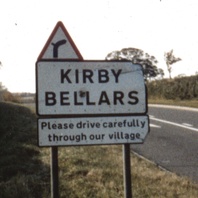
Viking Names
Kirby Bellars
Kirby Bellars, in the Framland Hundred of Leicestershire, comes from the Old Norse elements kirkja ‘church’ and by ‘farm, settlement’. The affix Bellars is derived from the personal surname Beler. Hamo Beler held the manor in 1166 and it remained in the family as late as 1361.
Read More
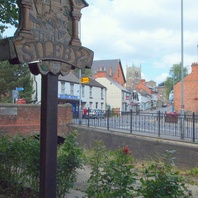
Viking Names
Sileby
Sileby, in the East Goscote Hundred of Leicestershire, comes from the Old Norse male personal name Sigulfr and the Old Norse element by ‘a farmstead, a village’.
Read More
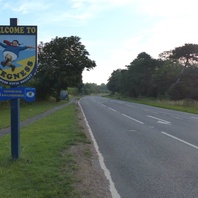
Item
Skegness
Skegness, in the Candleshoe Wapentake of Lincolnshire, is a Scandinavian compound, but the meaning of the place-name is uncertain. One suggestion is ‘Skeggi’s headland’ from the Old Norse male personal name Skeggi and the Old Norse element nes ‘ a ness, a headland, a promontory’. More likely, the first element could be the Old Norse element skegg ‘beard’, ‘something jutting out’, which is related to the verb skaga and the topographical term skagi ‘promontory’. This Old Norse appellative is probably found in the two Skegby place-names in Nottinghamshire.
Read More
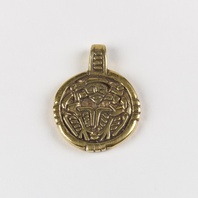
Viking Objects
Reproduction Pendant with an Odin Motif
This reproduction of a cast silver, gilded pendant featuring an image of a one-eyed figure with two birds has been interpreted as Odin and his two ravens, Huginn and Muninn. The original pendant was found at Winteringham, Lincolnshire. There are a number of close parallels which establish the wide currency of this subject group. These include numerous examples from Russia and two from Sweden, including some with silver gilding. A silver pendant with a related, but distinct design is known from Sjælland, Denmark.
Read More
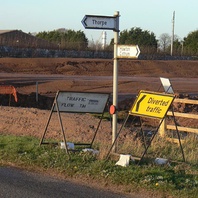
Viking Names
Thorpe
Thorpe, in the Newark Wapentake of Nottinghamshire, is simplex name from Old Norse þorp ‘a secondary settlement, a dependent outlying farmstead or hamlet’. Probably regarded as an outlying settlement from Newark.
Read More
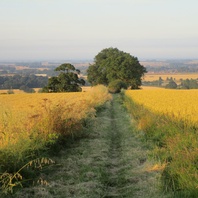
Viking Names
Hawerby
Now joined with Beesby, Hawerby is in the Haverstoe Wapentake of Lincolnshire, which has also been joined with Bradley Wapentake to form Bradley Haverstoe Wapentake. The name comes from an Old Norse male personal name Hávarðr plus the Old Norse element by ‘farmstead, village’. Interestingly, the same personal name is found in the wapentake name, Haverstoe, which combines it with the Old Norse element haugr ‘mound’. As Kenneth Cameron put it, ‘the coincidence is too great to avoid the conclusion that both are named from the same man. The site of the wapentake meeting-place is almost certainly a mound in the parish of Hawerby’. It has been suggested that the mound in question is a prehistoric round barrow (of which there is little or no trace today, as a result of ploughing) at TF 254 977, which has a fine view of the Humberside levels.
Read More
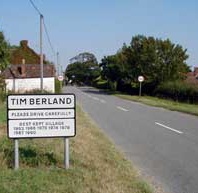
Viking Names
Timberland
Timberland, in the Langoe Wapentake of Lincolnshire, is likely an Anglo-Scandinavian hybrid coming from Old English timber ‘timber, trees; a wooden building’ and Old Norse lundr ‘a small wood’, thus giving the place-name the meaning ‘the grove where timber is obtained’. Alternatively, the first element may be Old Norse timbr ‘timber, trees, wood’.
Read More

Viking Names
Sutterby
Sutterby, in the Candleshoe Wapentake of Lincolnshire, comes from Old Norse sútari ‘a shoe-maker’ and Old Norse bý ‘a farmstead, a village’.
Read More
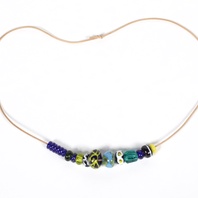
Viking Objects
Reproduction York Glass Beads
This necklace with glass beads is based on originals from York. Glass beads were a coveted item with some being imported from as far away as the Middle East. They were manufactured by specialised artisans who would heat various coloured glass rods over a furnace and melt the glass onto a metal stick to form different shaped beads.
Read More

Viking Names
Hild
Hildr is a monothematic name derived from Old Norse hildr ‘battle’, and in Old Norse mythology it was the name of a valkyrie. It is common across Scandinavia and also a common second element in a number of female personal names such as the very common Gunnhildr, Ragnhildr, etc. The name is attested as the first element in Hinderskelfe, North Yorkshire, and in Hinderwell, North Yorkshire. Hinderwell may originally have contained the name of the English St Hild of Streanæshalch (Whitby), but preserved forms of the place-name show Scandinavian grammar in the use of the genitive singular Hildar. This form is also seen in a lost field-name in Brocklesby, Lincolnshire.
Read More
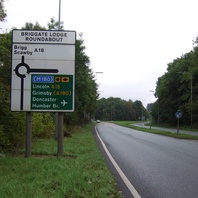
Viking Names
Scawby
Scawby, in the Manley Wapentake of Lincolnshire, likely comes from the Old Norse male personal name and byname Skalli, related to Old Norse skalli ‘a bald head, a bald-headed person’ and bý ‘a farmstead, a village’. Alternatively, skalli could be used to describe a bald hill. In the neighbouring parish of Broughton the minor names Scalehou and Scallehou were recorded in the twelfth and thirteenth century, the first element being the same Old Norse personal name with Old Norse haugr ‘mound’. Likely the Skalli of Skal(l)ehou was the same person as Skalli of Scawby.
